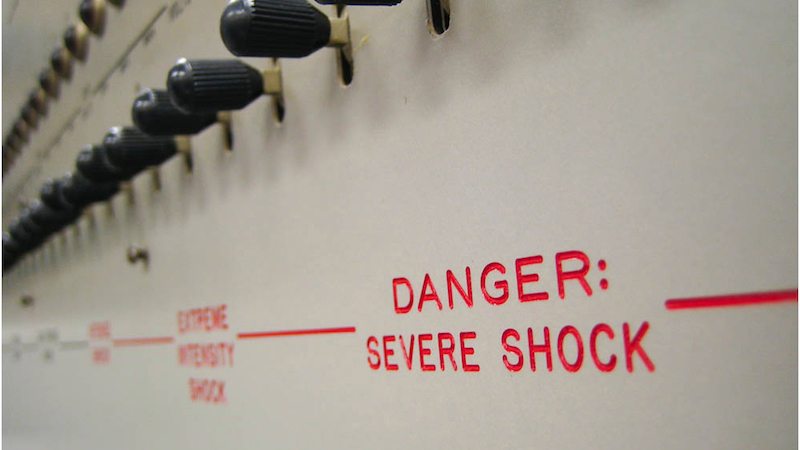The Milgram Experiment
Episode #4 of the course Most brilliant social psychology experiments by John Robin
Welcome back! I left you hanging yesterday, as I promised that today, we’d head into a far darker kind of experiment. Are you ready?
Obedience to Authority: A Study
How far are you willing to go to obey authority? At what point would you decide enough is enough if, say, the person telling you to do something you felt was wrong was the person you looked up to the most?
This is the idea behind another famous experiment, called the Milgram experiment, conducted at Yale University by psychologist Stanley Milgram in 1961.
The experiment appeared at first to be harmless: Two subjects entered the room, accompanied by a researcher who told them they were going to assume the role of teacher and student, in order to test the effectiveness of punishment as a learning tool.
The researcher had them pick lots randomly to assign who would take which role. After this, they were shown the equipment. Looming over the “teacher’s” desk was a rectangular box with switches for increasing electric voltages. Both teacher and student took a moment to look at this, and the student paused in a moment of brief hesitation as they saw how, as the voltages rose, the warnings went up from “very painful” to “extremely painful,” then finally to an end zone with “x x x” underneath those voltages (400+).
The researcher led the student into the room where they would learn. Here, they were instructed to strap on a wrist device that would deliver a shock each time the student got a concept wrong. The researcher told the student the shock would cause pain but would not be dangerous. However, despite all this, the “student” participant did stop to express his concern: He had a heart condition and was worried the electricity might cause him trouble. The researcher assured him that this would not be the case.
Now, the pressure was on, for both the student and the teacher. The student had to correctly recite word pairs, progressing by increasing difficulty, and each time he got the answer wrong, the teacher had to flick the switch for the next level of voltage. The teacher was told that, no matter what happens, he must keep going and increase the voltage.
Each time he flicked the switch, the student shouted, “Ow!” This experiment was run many times, and in many of the trials, the teacher would laugh nervously in the early stages.
As the experiment progressed, however, the student’s shouts became more concerning. He started to complain about his heart condition and demand he be let free.
50% of the teachers did not finish, telling the researcher they couldn’t inflict pain on somebody who clearly did not want to participate. However, the researcher always pushed the teacher to keep going, telling them, “You don’t have a choice. The experiment requires you to keep going.”
Even for the 50% who kept going, this was done with great reluctance. The “teacher” participants would consult the researcher, trying to find justification in how they could keep going and sometimes wanting reassurance that if anything went wrong, it would not be on their conscience.
Eventually, as the voltage got higher, the student cried with agony. Then they stopped responding. The researcher demanded the teacher keep going, considering four to five seconds of no answer to be a wrong answer, deserving another shock.
When the experiment was over, the researcher asked the teacher how they felt about what had happened. In each case, even the ones where the students refused to keep going, the researcher informed them that this whole time, the “student” was, in fact, an actor, and the “random assignment” has been rigged to put them in the teacher role. The experiment, they were told, was not to test learning through punishment, but rather how someone responds to authority when that authority is telling them to harm another person.
To ensure proper ethics, the teacher and the actor student were reunited at the end and shook hands.
Many people misunderstand the results of this experiment as implying a large percentage of the population possess sadistic characteristics, but this is not true, since even those who followed through were deeply conflicted at what they were doing. What it suggests was far more disturbing:
Natural human goodness cannot be counted on to insulate us from abused authority.
All right, time to leave this gloomy tour stop behind. Stay tuned for tomorrow’s installment, where we’ll explore the disturbing dynamics of teamwork.
Learn Something New Every Day
Get smarter with 10-day courses delivered in easy-to-digest emails every morning. Join over 400,000 lifelong learners today!
Recommended video
Watch the original Milgram experiment video here.
Recommended book
Obedience to Authority: An Experimental View by Stanley Milgram
Share with friends

